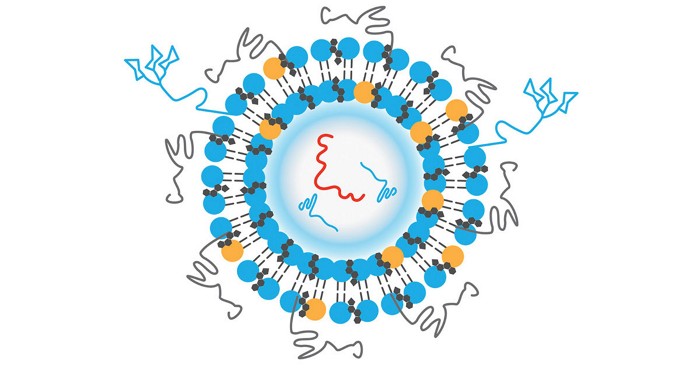Advertisement
Grab your lab coat. Let's get started
Welcome!
Welcome!
Create an account below to get 6 C&EN articles per month, receive newsletters and more - all free.
It seems this is your first time logging in online. Please enter the following information to continue.
As an ACS member you automatically get access to this site. All we need is few more details to create your reading experience.
Not you? Sign in with a different account.
Not you? Sign in with a different account.
ERROR 1
ERROR 1
ERROR 2
ERROR 2
ERROR 2
ERROR 2
ERROR 2
Password and Confirm password must match.
If you have an ACS member number, please enter it here so we can link this account to your membership. (optional)
ERROR 2
ACS values your privacy. By submitting your information, you are gaining access to C&EN and subscribing to our weekly newsletter. We use the information you provide to make your reading experience better, and we will never sell your data to third party members.
Drug Delivery
Letting nanoparticles hitchhike on red blood cells
Particles adsorbed on cells accumulate in the first organ downstream from injection site
by Celia Henry Arnaud
July 20, 2018
| A version of this story appeared in
Volume 96, Issue 30
When nanoparticles are used for drug delivery, they often end up in the liver or spleen instead of the intended target. A team led by Jacob S. Brenner and Vladimir Muzykantov of the University of Pennsylvania now shows that nanocarrier delivery can be improved by the having the nanocarriers “hitchhike” on red blood cells (Nat. Commun. 2018, DOI: 10.1038/s41467-018-05079-7). The researchers withdrew red blood cells from mice and incubated them with nanoparticles, which adsorbed on the cell surface. They then injected the cells back into the animals through arterial catheters. When injected this way, the nanocarriers accumulate in the first organ they encounter downstream from the injection site. The researchers think the narrow capillaries cause the nanoparticles to detach from the blood cells and transfer to the cells lining the capillaries. The red blood cells themselves don’t clog the arteries or capillaries. By moving the catheter to different arteries, the researchers can target different organs. Such an approach could be used to deliver drugs for acute conditions such as heart attacks and embolic strokes for which the standard of care already involves the use of arterial catheters, the researchers suggest.





Join the conversation
Contact the reporter
Submit a Letter to the Editor for publication
Engage with us on Twitter